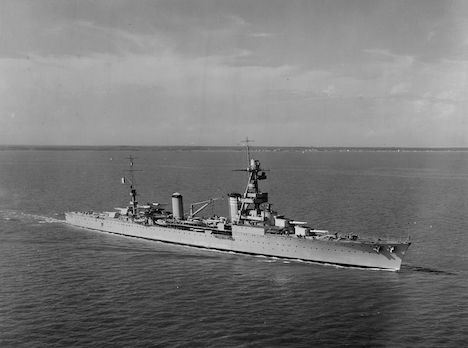The US wasn't the first group of creeps to show up on Vietnam's coastline
 Print This Print This
By Staff Writers | WSWS
from World Socialist Web Site
Tuesday, Nov 23, 2021
75 years ago: French forces massacre Vietnamese
 |
| The French cruiser Suffren |
On November 23, 1946, French military vessels opened fire on the Vietnamese coastal city of Haiphong, in a brutal massacre that claimed at least 6,000 lives and perhaps as many as 20,000. The mass killing was part of a chain of events that led to the First Indochina War and to the southeast Asian nation fighting for independence against the imperialist powers for nearly 30 years.
The attack took place in the fluid situation that followed the end of World War II. During the conflict, Japan had taken control of Indochina from France, ending its longstanding colonial rule. With Tokyo’s defeat, France sought to regain its former possession. The Stalinist Communist Party of Vietnam and its leader Ho Chi Minh maneuvered among the imperialist powers and sought to reach an agreement with them.
In September 1945, Ho proclaimed an independent Democratic Republic of Vietnam, but over the following months, the French, in collaboration with the British, would secure control of much of Indochina, especially the south. Ho would make overtures to the US, and, in 1946, held a series of talks with the French, including in March, when he signed the Ho-Sainteny agreement, allowing for a continued French military presence in Indochina.
On November 20, 1946, with talks for the implementation of the deal postponed, a French patrol ship seized control of a Chinese junk attempting to bring so-called contraband from China into Haiphong. Vietnamese fighters responded angrily, opening fire.
The French seized on the incident as a pretext for launching a major assault. Jean Étienne Valluy, commander of French forces in Indochina, instructed his subordinates that “The moment has come to give a severe lesson to those who have treacherously attacked you. Use all the means at your disposal to make yourself complete master of Haiphong.” This was accompanied with a provocative ultimatum to the Vietnamese independence movement, demanding that it leave the French and Chinese quarters of the city.
On the morning of November 23, the ultimatum having been rejected, three French avisos, or dispatch boats, together with the Suffren cruiser, approached the port at Haiphong. They began bombarding the largely defenseless city. Thousands would die as a direct result of the shelling, and from stampedes the attack caused. Within a week, the French would take control of Haiphong.
Source URL
|
 Print This Print This

|

